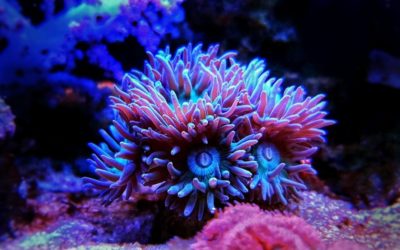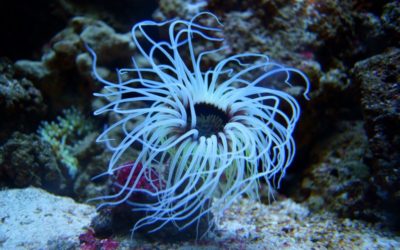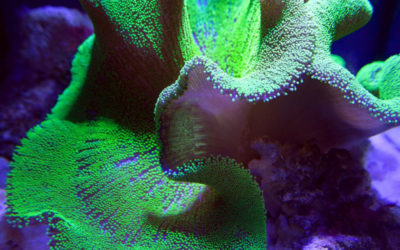Marine aquarium cleaning crew for beginners
When maintaining a saltwater aquarium, you need to think about all the parts of the ecosystem you are trying to create. This means planning the size of your aquarium, what equipment you will need, and then deciding which animals to keep. But you should also take the care of your aquarium into account. This is where the cleaning crew comes in.
In your tank, these animals are engaged in removing organic matter, sifting and aerating the sand, and controlling algae. It is also always wise to regularly clean your sand yourself by vacuuming it, you can use this bottom cleaner for this. The cleaning crew consists of different types of animals. It is important that a cleaning crew is present in your aquarium.
Each of these animals has a different function. Below we give you an overview of the roles that snails, crabs, shrimps, starfish and sea urchins play in the saltwater aquarium. We will also give some specific examples of certain cleaners. As long as you only have a few of each group, your cleaning crew is complete!
snails
Snails are the best addition to your cleaning crew. Snails will feed on algae, cyanobacteria and diatoms on your rocks, substrate and aquarium glass.
trochus snails
Trochus snails are perfect for your new aquariums. They help control diatoms and are easy to care for. The trochus snail will graze on your rocks and sand.
The trochus snail is peaceful and is not easily eaten by crabs or crustaceans due to the shape of its shell. In addition, trochus snails can turn around when they have fallen over, which increases the chance of survival. Depending on the size of your aquarium, you can keep some of these snails. The trochus snail is a great addition to your cleaning crew.
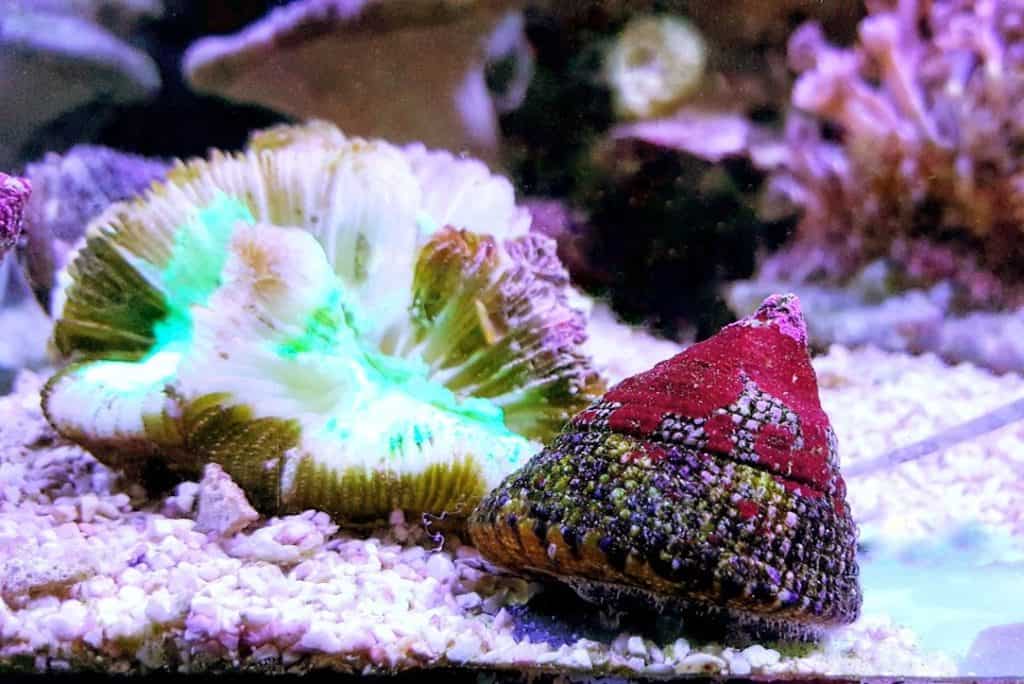
Tiger nassarius snails
These large snails are suitable for an aquarium with a sandy bottom. The tiger nassarius snails come at night or when food is placed in the aquarium above the sand. They live most of the day buried under the sand.
When they crawl into the sand, they help aerate the substrate. They also forage for uneaten food and decaying organic matter. It is better to wait before adding these snails to a brand new aquarium and instead add fish first. This ensures that there is sufficient nutrition in the substrate for these snails.
Some species of nassarius snails can grow to about 10 centimeters. So the sand must be deep enough for these snails. If you have a smaller aquarium or a shallow sandy bottom, it is better to use smaller species of nassarius snails. These smaller relatives perform the same tasks as the tiger nassarius snail, namely aerating the sand and cleaning up uneaten food and decaying organic matter.

Scratch
These little creatures can be very useful for your aquarium. For example, they clean up organic material, but many species also eat algae. Even the algae that are not cleaned up by snails, for example, such as bubble algae. However, care should always be taken when keeping crabs. When they get a bit bigger, they can feast on coral or even small fish.
Emerald crab
The Emerald crab has a green body with hairy legs. These little crabs forage in your rocks and eat algae, especially bubble algae (Valonia ventricosa). Emerald crabs also forage for scraps of food.
The disadvantage of emerald crabs is that they grow too large for your aquarium. If there is no food available to them, they may start eating corals or other animals. So make sure that your crabs have enough food and, if necessary, feed them. If this does not work, you can also place your crabs in your refugium.

hermit crabs
Hermit crabs are fun to watch as they scurry through your aquarium. They pick up organic material from the soil and the rocks, also eating algae along the way. But be warned, these crustaceans will also munch on your snails for food or for the shell. So make sure you have enough empty shells in your aquarium. Hermit crabs are also quite clumsy and will knock over corals that are not firmly attached.
Red ring legged hermit crab
These crustaceans will not eat your corals. These bright red lobsters have a calm temperament. They are omnivorous, they eat organic matter, among other things, and also have a large appetite for algae. They are not difficult to care for which makes them perfect for a novice hobbyist.
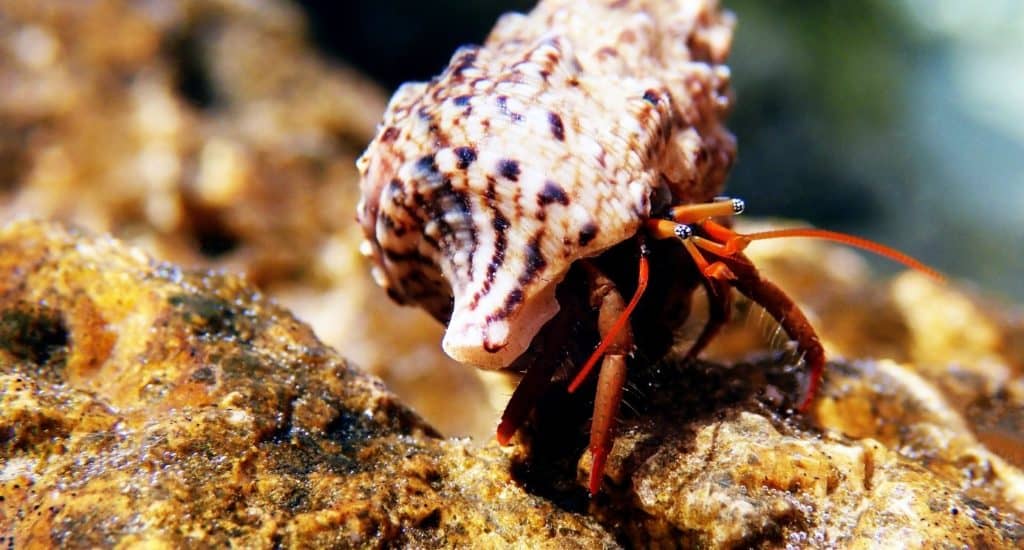
Shrimps
Shrimp have long legs which are perfect for reaching into crevices and rocks or picking off parasites from fish. There are two types of beneficial shrimp for your aquarium, the scavengers and the cleaner shrimp. Brush shrimp help remove the pests from corals and remove the parasites from the fish. These scavengers clean up the excess food and decaying organic matter in the aquarium.
Hinge-mouth shrimp
This shrimp has a beautiful color pattern of red and white stripes on its body. It also has a unique movable mouth that is usually angled upwards.
The males usually have a larger claw than the females. This shrimp likes to live with friends of its own kind, congregating in rock crevices or hanging under rock. Keep this in mind when figuring out that you are getting at least four shrimp for your tank.
These shrimps are scavengers and eat food from crevices where larger animals cannot reach. They are scavengers so not cleaner shrimp. If you are looking for a shrimp to clean your fish you will need to add a cleaner shrimp such as a blood shrimp.
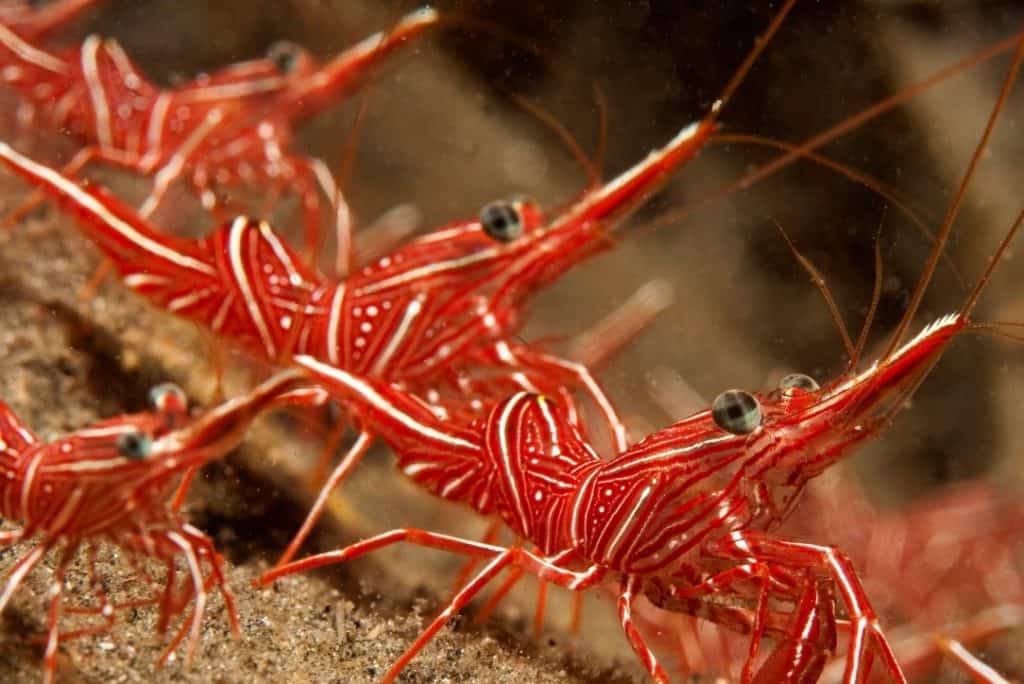
the blood shrimp
Blood shrimp are one of the most popular shrimp in the aquarium hobby. It has a blood red body with white spots and long white antennae. Blood shrimp like to hide in caves or hanging under rocks. This one is best kept in pairs or alone as these shrimp will only tolerate their mate and will chase the rest away. This shrimp will remove dead tissue and parasites from fish. He will also forage for leftover food scraps.

Striped coral shrimp
This shrimp has a beautiful color pattern and body shape with red and white bands all over the body with long claws and long white antennae. This shrimp is a scavenger and picks up leftover food in the tank. Despite being a scavenger, shrimp are sometimes seen cleaning parasites from fish.

starfish
Starfish can sift through the sand, graze algae off rocks and over the glass of the aquarium, feeding on algae and diatoms. However, starfish are sensitive to changes in parameters such as oxygen content, salinity and water pH.
Sand-sifting starfish
This starfish will consume large amounts of organic matter and uneaten food. As the name suggests, this starfish burrows into the sand in search of food, thereby providing aeration of the substrate.
However, without adequate food, this starfish will also eat small invertebrates, including shrimp, sea urchins, mollusks, or other small starfish. Make sure you give the starfish plenty to eat or else it will settle in the sand and starve.
Sea urchins
Sea urchins are excellent algae grazers that keep the rocks and aquarium glass free of unwanted algae. Their spines protect them from fish and other predators. However, they can knock over rocks and corals.
Diadem sea urchin
These long spiny sea urchins are excellent algae control agents for an aquarium. You want to make sure you have plenty of rocks in your tank for this sea urchin to graze.
These sea urchins emerge from the rocks at night to forage for food such as algae and seaweed. These sea urchins are an excellent anti-algae agent. They are very resistant to predators so very suitable for an aquarium in which other invertebrates are eaten.

Tuxedo sea urchin
This sea urchin has five to ten broadly colored bands, usually blue or black, with red or brown spines. This very striking combination gives this sea urchin a beautiful appearance. During the day it hides between the stones or in crevices. At night it emerges to feed on algae.


